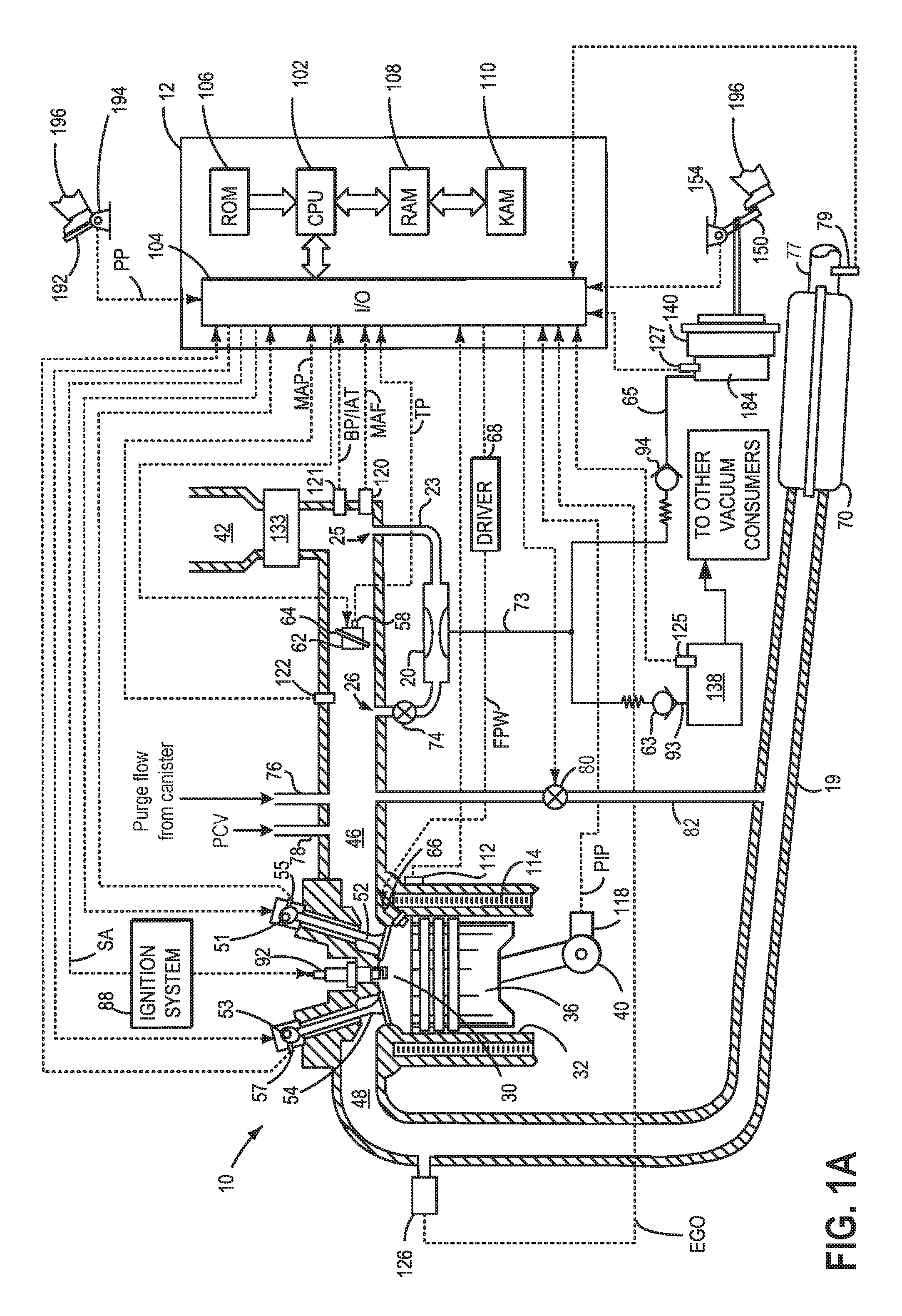Method of controlling aspirator motive flow
a technology of motive flow and aspirator, which is applied in the direction of electric control, combustion air/fuel air treatment, braking system, etc., can solve the problems of engine shutdown events that can produce degraded noise, vibration and harshness (nvh), and engine shutdown shake, so as to improve fuel economy
- Summary
- Abstract
- Description
- Claims
- Application Information
AI Technical Summary
Benefits of technology
Problems solved by technology
Method used
Image
Examples
Embodiment Construction
[0027]The following detailed description relates to methods and systems for generating vacuum at an aspirator coupled to an engine system, such as the naturally aspirated engine system of FIG. 1A and the forced induction engine system of FIG. 1B. The engine system may be included in a hybrid electric vehicle (HEV), such as the hybrid vehicle system shown in FIG. 2. Vacuum generation at the aspirator may be regulated by an aspirator shut-off valve (ASOV) coupled either upstream or downstream of the aspirator. As such, an opening of the ASOV may be adjusted to control motive flow through the aspirator, thus, controlling an amount of vacuum generated at the aspirator. A controller may be configured to perform one or more control routines, such as the example routines of FIGS. 3-10, to open or close the ASOV based on engine conditions (FIGS. 3 and 4) such as engine speed (FIG. 6), a temperature of the ASOV (FIG. 8) which may depend on a current and voltage provided to the ASOV (FIG. 9),...
PUM
 Login to View More
Login to View More Abstract
Description
Claims
Application Information
 Login to View More
Login to View More - R&D
- Intellectual Property
- Life Sciences
- Materials
- Tech Scout
- Unparalleled Data Quality
- Higher Quality Content
- 60% Fewer Hallucinations
Browse by: Latest US Patents, China's latest patents, Technical Efficacy Thesaurus, Application Domain, Technology Topic, Popular Technical Reports.
© 2025 PatSnap. All rights reserved.Legal|Privacy policy|Modern Slavery Act Transparency Statement|Sitemap|About US| Contact US: help@patsnap.com



